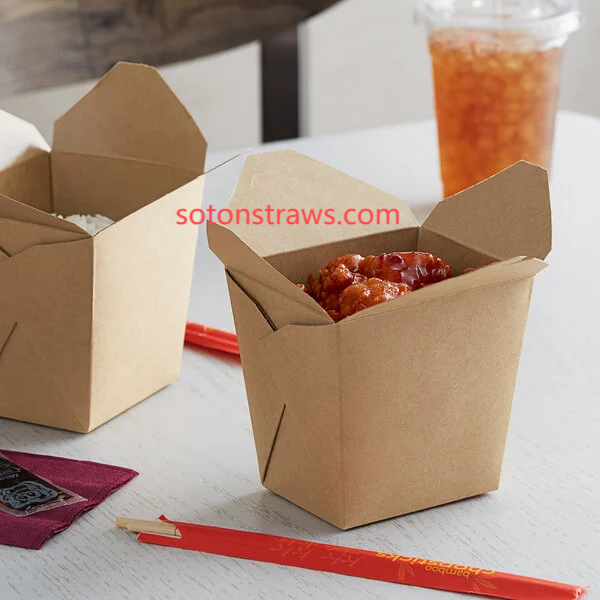Soton’s Disposable Kraft Box Transparency!

That appealing sheen inside many takeout containers sparks genuine concern: is it secretly plastic undermining the box's eco-friendly image? Understanding coatings is crucial for making informed choices about disposable kraft box options. While the natural kraft exterior suggests sustainability, the interior treatment often holds the key to its true environmental performance and end-of-life journey. This "great liner debate" highlights the complexity behind seemingly simple packaging and the importance of looking beyond the surface.
Liners serve essential functional roles. They create barriers against grease and moisture, preventing soggy boxes and leaks, especially vital for hot, saucy, or oily foods. They can also provide a smoother surface, enhancing food presentation and preventing sticking. However, the materials achieving this vary significantly. Traditional plastic liners like polyethylene (PE) offer excellent performance but create a significant problem: they render the entire disposable kraft box non-recyclable and non-compostable in standard facilities. The plastic layer contaminates paper recycling streams and persists in composting environments. Recognizing this, manufacturers and consumers alike are pushing for alternatives that maintain functionality without the environmental burden.
Truly eco-conscious solutions are emerging. Plant-based coatings derived from materials like corn starch, PLA (polylactic acid from fermented plant sugars), or even algae extracts are gaining traction. These bio-based liners aim to provide adequate grease and moisture resistance while being industrially compostable under the right conditions. Water-based barrier coatings, sometimes incorporating natural clays or other minerals, offer another path, potentially compatible with paper recycling or composting depending on their specific formulation. The critical factor is verification: claims need backing from recognized compostability certifications that test the entire package, including the liner, breaking down safely within defined timeframes. Scrutinizing certifications, not just marketing terms like "plant-based" or "eco," is essential. When chosen responsibly, these liners allow a kraft box to fulfill its functional role while aligning with circular economy goals.
Seeking genuine sustainability requires partners committed to verified materials. Soton focuses on creating high-performing disposable kraft box solutions that utilize rigorously tested, certified compostable liners, ensuring functionality meets environmental responsibility. Trust Soton for integrity inside and out.Click https://www.sotonstraws.com/product/biodegradable-straws/st101-paper-straws/ to reading more information.
- Art
- Causes
- Crafts
- Dance
- Drinks
- Film
- Fitness
- Food
- Games
- Gardening
- Health
- Home
- Literature
- Music
- Networking
- Other
- Party
- Religion
- Shopping
- Sports
- Theater
- Wellness


